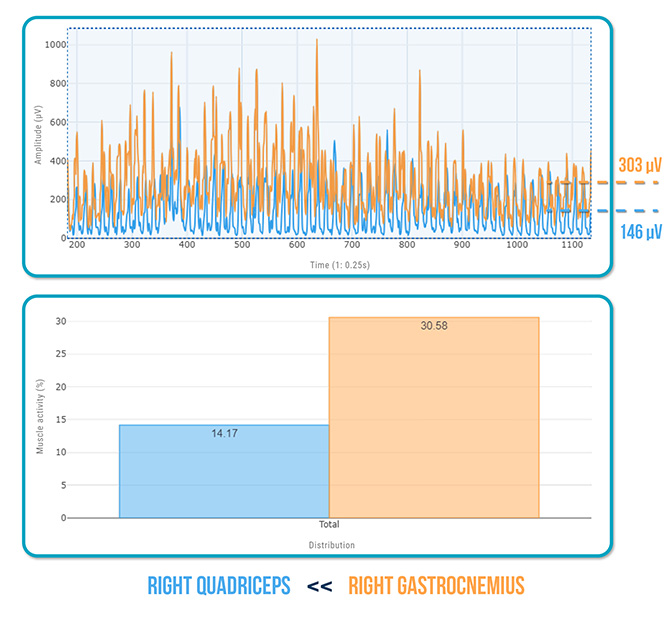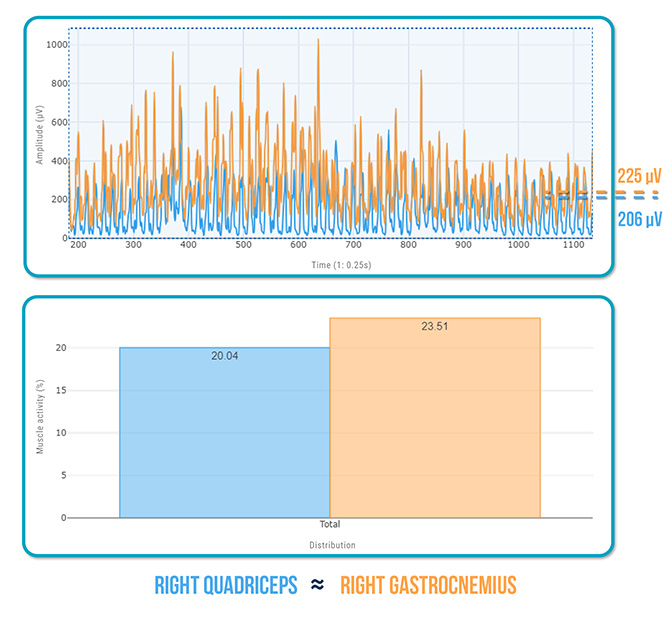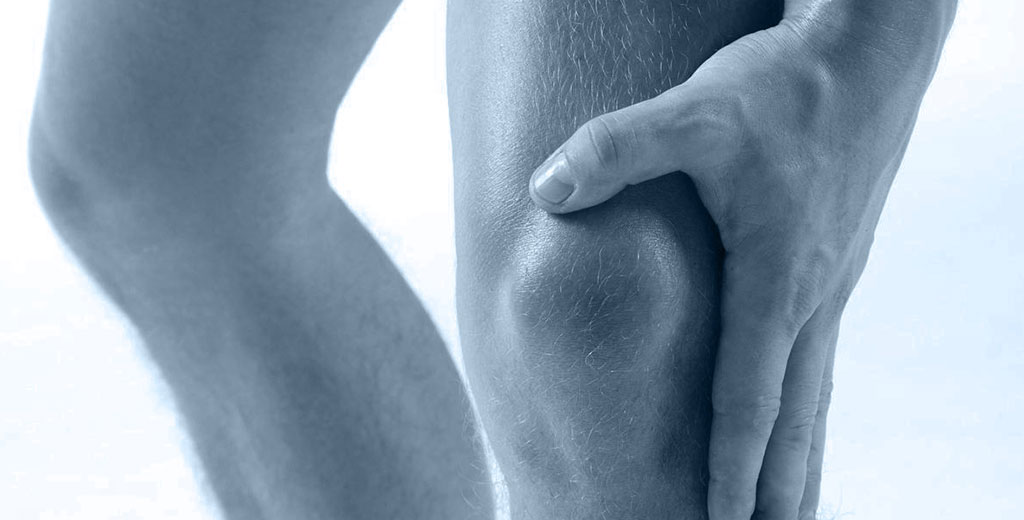Running is one of the most complex and demanding movements from a biomechanical and neuromuscular perspective.
As speed increases, multiple technical and functional adaptations occur, which can significantly alter how muscles activate and work together.
One of the most relevant aspects to analyze is how the muscular synergy between the gastrocnemius and quadriceps changes—two key muscle groups in force generation, impact absorption, and movement control.
Surface electromyography (EMG) allows you to assess in real time the synergy between key muscle groups, detect compensations as speed increases, and retrain more efficient and safer motor patterns.
Want to improve your patients’ or athletes’ running technique?
👉 Contact us and discover how to use EMG with mDurance to optimize running performance.
In this post, you’ll learn how this synergy changes with increasing speed, the potential consequences, and how to use surface EMG to evaluate and correct it.
Running speed and biomechanical changes
As you run faster, not only do step frequency and cadence increase, but important technical changes also occur, such as:
- Increased stride length
- Shifting of the center of gravity
- Changes in trunk verticality
- Variations in foot strike pattern (more heel or forefoot contact)
These biomechanical changes also lead to differences in muscle activation, especially among the main drivers of running.
When you run faster, two key adaptations can be observed:
- 1. There’s increased knee and hip flexion during the propulsion phase, requiring more quadriceps engagement to control and extend these joints.
- 2. There’s greater ankle dorsiflexion, which alters gastrocnemius activation, especially during the stance phase.
Under normal conditions, the expected muscular synergy during running is:
Gastrocnemius> Quadriceps
In other words, the gastrocnemius should lead the propulsive effort, while the quadriceps take on a secondary role in control and stabilization.
EMG Analysis: What happens as speed increases?
Running at 12 km/h

Conclusion:
A typical synergy is observed, with the gastrocnemius activating more than twice as much as the quadriceps, showing its dominant role in propulsion.
This pattern aligns with efficient running technique at moderate speed.
Running at 16 km/h

Conclusion:
Here, activation of the quadriceps and gastrocnemius becomes similar, indicating a shift in muscular synergy.The quadriceps begin to take on a more dominant role—something that may not be ideal unless accompanied by proper technique.
Why does this synergy change at higher running speeds?
Biomechanical hypotheses:
- Increased eccentric activity of the quadriceps to control knee flexion due to the longer stride length.
- A backward trunk position relative to the center of gravity, favoring quadriceps activation as both stabilizer and propulsor.
- More frequent heel striking, which limits gastrocnemius activation by reducing its ability to generate push-off from the forefoot.
If this technical pattern isn’t corrected, it can reduce running efficiency and increase the risk of overuse injuries to the quadriceps or knee joint.
Takeaways: How to apply this in your clinical or sports practice
- – Increasing speed without controlling technique can alter gastrocnemius–quadriceps synergy, potentially compromising performance and runner health.
- – A more upright trunk posture and a well-measured stride help maintain the gastrocnemius as the primary propulsive muscle.
- – EMG is an essential tool for identifying and correcting these muscular patterns during running.
With EMG, you can:
- – Assess in real time the synergy between key muscle groups.
- – Detect unwanted compensations and adaptations as pace changes.
- – Retrain more efficient and safer motor patterns.
Want to improve your patients’ or athletes’ running technique?
Start by measuring how their muscles are working with EMG—and fix what you can’t see with the naked eye.
Discover more about how to use EMG with mDurance to optimize running performance.
See you in the next post 🙂

